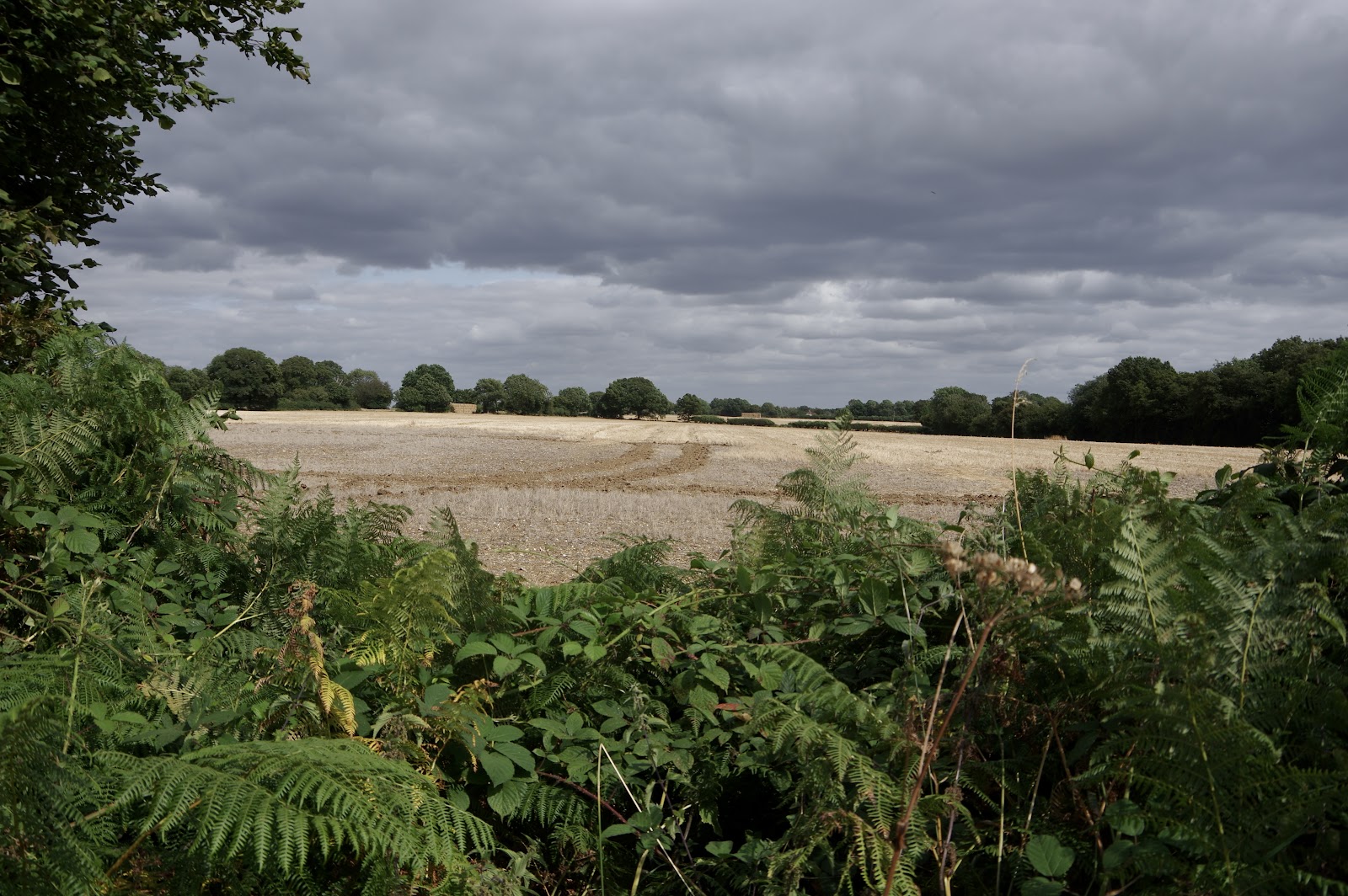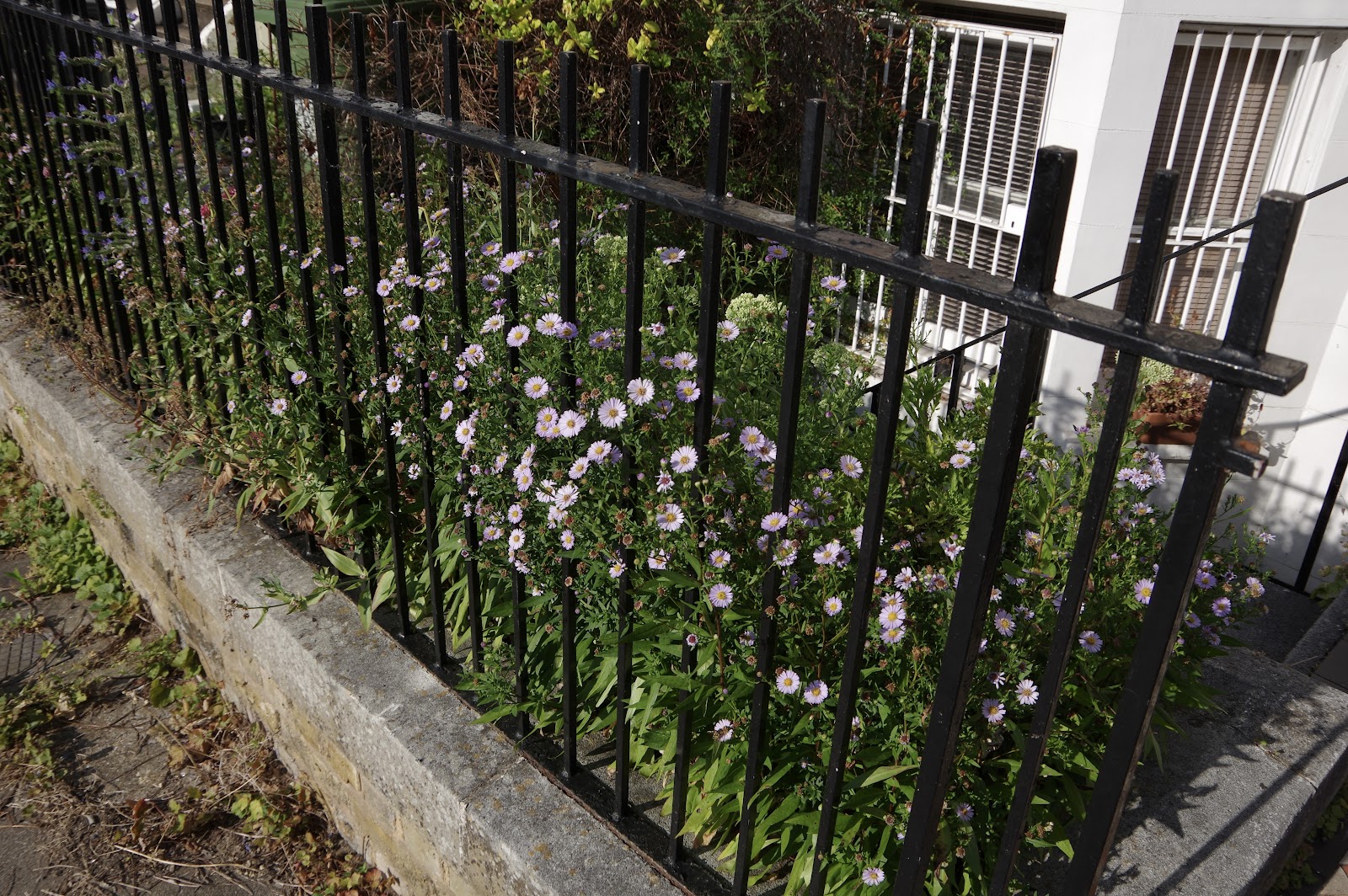Perennial Sweet Pea, sometimes called Everlasting Sweet Pea (Lathyrus latifolius)
A diary of back garden botany, urban ecology, rural rambles and field trips to the middle of nowhere...
Thursday, 29 August 2024
Monday, 26 August 2024
A sure sign that late summer is upon us when you dine al fresco and wasps come to join you. Wasps are omnivores. As well as scavenging they eat insects which they chew and feed to their carnivorous larvae. Moreover they are important 'accidental pollinators' by going from flower to flower drinking nectar and thereby distributing pollen.
Reportedly wasps numbers are down this year and I have seen very few thus far. They play an important part in the ecosystem so I was pleased to see this one as it shared my roast dinner.
Tuesday, 20 August 2024
The long and the short of it. Two rows of Jerusalem Artichoke (Hellianthus tuberosous) on the allotment. To the left one of the usual varieties that grow to about 10ft/3m tall. I don't know which variety exactly, I bought a bagful at a farmers market early last year to plant rather than eat. There were about 20 tubers in the bag which had multiplied to around 200 when I harvested them a year later. Some got eaten the rest I replanted.
To the right a shorter variety that grows to about 4ft/1.2m in height. I am trying these for the first time. I was looking for 'Dwarf Sunray' which permaculturalists in America seem to be very keen on. Hard to find in the UK but I came across a variety called 'Stampede'. The Norwegian website 'Edimenetals' is a very useful resource and the author speculates that 'Sunray' and 'Stampede' are one and the same. Indeed go by other names as well, for example 'Bianka' in Russia.
H. tuberosous is a relative of the Sunflower (H. annuus) and is topped by bright yellow flowers in autumn- if it flowers. They seem to be shy to flower in UK but Stampede/Sunray flowers a month or so earlier which might help.
A very low maintenance perennial vegetable. Plant the tubers, leave them to it. They stay in the ground till harvesting in late winter/early spring as and when you want to eat some. I haven't fed or watered them, they outgrow any weeds apart from Bindweed which I snipped at the base and left to wither on the stems. I'm expecting quite a crop!
Sunday, 18 August 2024
The days are warm and mellow but wildflowers are on the wane. Accordingly bees seek out the nectar and pollen on those that remain.
I can't help thinking of August as 'high summer' because that was the month of school holidays in childhood. For plants the longest days in June/July are in effect the height of summer because that is when the most energy is available from the sun.
Saturday, 17 August 2024
Six-spot Burnett must take pride of place with the Jersey Tiger as the UK's most striking day flying moth. When I went to Knocking Hoe on Tuesday there was only a smattering of butterflies but a veritable infestation of Six-spot on the flowers of Knapweed, Scabious and Thistle.
One for the entomologists: some had waxy, translucent wings. Why is that? Some stage in their growth cycle?
Saturday, 10 August 2024
Thursday, 8 August 2024
Monday, 5 August 2024
I haven't included many photos of my garden in London this year, as I'm spending a good deal of my time in Hertfordshire. The garden is green but shady by this point in the summer; the tree canopy blocks a good deal of sunlight. The middle section is the most flowery by virtue of getting a decent amount of sun in the morning. Persicaria amplexicaulis provides a backdrop for Purple Loosestrife, Willowherb, Meadowsweet, Soapwort et al.
Sunday, 4 August 2024
The Jersey Tiger Moth is heading north. First seen in the Channel Islands and on the south coast they can now be spotted in London and surrounding counties. Presuambly a beneficiary of the warming climate.
By chance I saw one resting on a window pane so here is a view of the underside of a Jersey Tiger...
Saturday, 3 August 2024
Thursday, 1 August 2024
The sky blue flowers of Love-in-a-mist (Nigella damascena) develop into equally decorative seed pods. The stems and balloon-like pods are dry and brittle by this point in the season and ready to shed their seeds.
The optimum moment to gather the seed is when the pod is just about to split.
Each pod contains around fifteen-twenty seeds. So a couple of pods is equivalent to a packet of seed which would cost a few pounds. Love-in-a-mist self-seeds in profusion at the music school and we let it do its thing. There are be hundreds of pods that are about to burst or have already done so.
Subscribe to:
Comments (Atom)


























